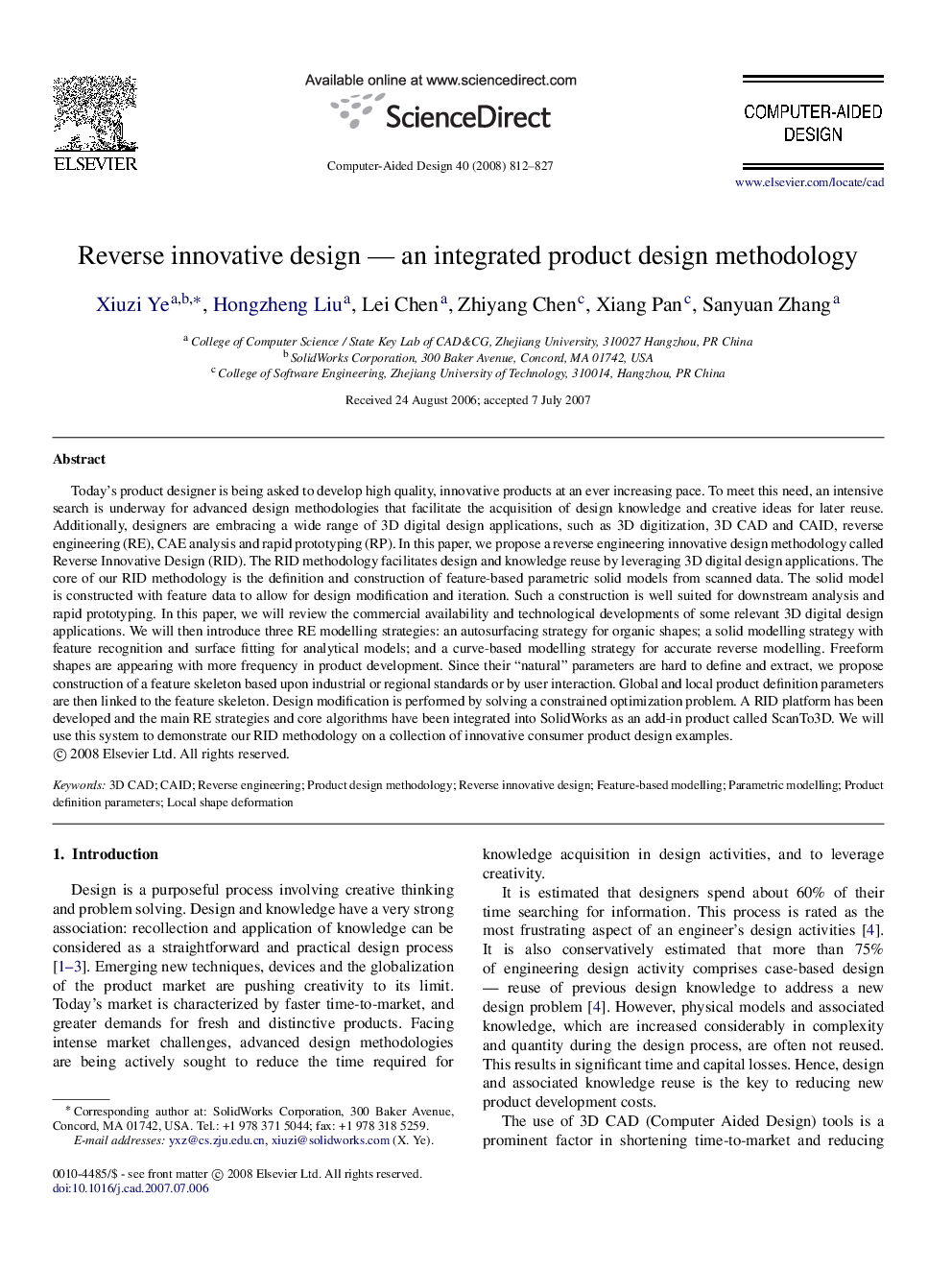| کد مقاله | کد نشریه | سال انتشار | مقاله انگلیسی | نسخه تمام متن |
|---|---|---|---|---|
| 440401 | 691016 | 2008 | 16 صفحه PDF | دانلود رایگان |

Today’s product designer is being asked to develop high quality, innovative products at an ever increasing pace. To meet this need, an intensive search is underway for advanced design methodologies that facilitate the acquisition of design knowledge and creative ideas for later reuse. Additionally, designers are embracing a wide range of 3D digital design applications, such as 3D digitization, 3D CAD and CAID, reverse engineering (RE), CAE analysis and rapid prototyping (RP). In this paper, we propose a reverse engineering innovative design methodology called Reverse Innovative Design (RID). The RID methodology facilitates design and knowledge reuse by leveraging 3D digital design applications. The core of our RID methodology is the definition and construction of feature-based parametric solid models from scanned data. The solid model is constructed with feature data to allow for design modification and iteration. Such a construction is well suited for downstream analysis and rapid prototyping. In this paper, we will review the commercial availability and technological developments of some relevant 3D digital design applications. We will then introduce three RE modelling strategies: an autosurfacing strategy for organic shapes; a solid modelling strategy with feature recognition and surface fitting for analytical models; and a curve-based modelling strategy for accurate reverse modelling. Freeform shapes are appearing with more frequency in product development. Since their “natural” parameters are hard to define and extract, we propose construction of a feature skeleton based upon industrial or regional standards or by user interaction. Global and local product definition parameters are then linked to the feature skeleton. Design modification is performed by solving a constrained optimization problem. A RID platform has been developed and the main RE strategies and core algorithms have been integrated into SolidWorks as an add-in product called ScanTo3D. We will use this system to demonstrate our RID methodology on a collection of innovative consumer product design examples.
Journal: Computer-Aided Design - Volume 40, Issue 7, July 2008, Pages 812–827